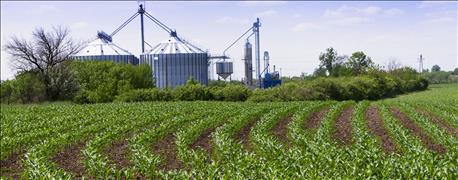
Dave Nanda, Seed Consultants, Inc., has worked in plant breeding or more than 40 years. He has also interviewed farmers who do a good job of obtaining good stands of corn. And he's talked to some who don't do such a good job of getting cornfields to emerge evenly and uniformly.
Surely over 40 years he's learned a few things about what makes the difference between obtaining good stands and average stands.
Part of the answer is in choosing the right seeding depth for corn, Nanda says. Hardly anyone would only plant one-half inch deep. It's simply too shallow for rooting, and germinating seedlings that close to the surface could run out of moisture. The more common placement is either one or 1.5 inches deep.
Related: DuPont Shares Results of Shallow Corn Planting Study
However, Nanda says many farmers still plant at least 2 inches deep. That seemed to be the standard in the old days, before no-till and minimum tillage planting, and is still the depth of choice if the soil is dry and the forecast calls for more dry weather ahead.
Corn planting deeper than two inches?
Jeff Phillips, Tippecanoe County Extension ag educator, has planted corn as deep as 4 inches in years past, when soils were warm. They emerged as well and at about the same time as corn planted at 2- to 3-inches deep.
Phillips also warns against planting at one-inch depth -- in his experience he had erratic emergence all year and wound up yielding about 20 bushels less than the other three planting depths.
Phillips theorized that the corn planted one inch deep started to germinate, but some kernels didn't have enough moisture to finish the job. What was surprising was that depth, emergence ran about two growth stages behind the other planting depths all season long.
Corn planting depth is different for no-till >>
Corn planting depth for no-till
Barry Fisher, state agronomist with the Natural Resources Conservation Service, sees a problem with going about 2 inches deep in most no-till situations. If you're trying to plant early enough to get in on the higher yields that usually result from earlier-planting dates, soils are likely to still be cool and moist at deeper depths, especially in no-till situations.
No-till fields warm up slower because residue covers the surface, keeping soils cooler and wetter.
The other problem, he notes, is that you're likely to pull up more moist soil. Fertilizer coulters, especially ones with notched blades, are notorious for throwing out moist soil that then sticks to gauge wheels, he notes.
Pretty soon your planter is not operating as smoothly as it was set up to do. The result can be uneven depth placement.
Related: Dave Nanda's Top 5 Ideas to Improve Corn Yields
If one seed is placed at 1.5 inches deep and the other at 2 inches in no-till, there could be a sizable temperature difference, he notes. That could determine how quickly each plant emerges. If the deeper one is several days slower in maturing, it may act like a weed he rest of the season, and perhaps not produce an ear.
Instead of a productive corn plant, it becomes a weed competing with plants that are producing ears for sunlight, moisture and nutrients.
Both Nanda and Fisher believe consistent seed depth placement is crucial, and is worth the effort it takes to make it happen. It will also be worth the extra time it takes to stop and dig, row by row, until you're satisfied that your planter is placing seed at a depth that is as consistent as possible.
This story was first posted on March 29, 2010.
About the Author(s)
You May Also Like




